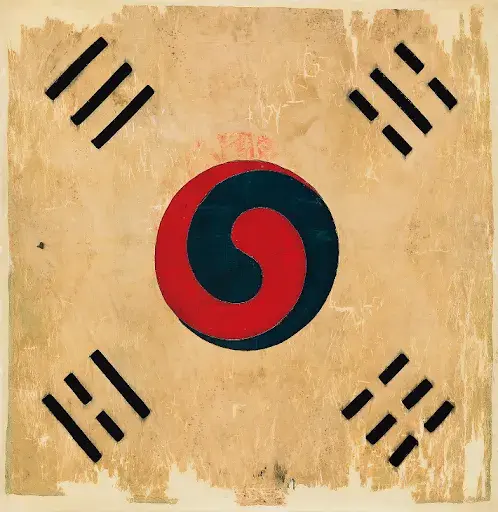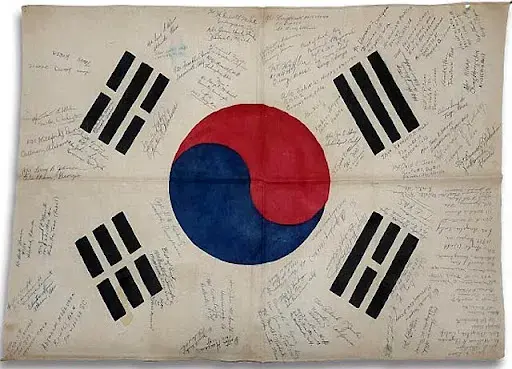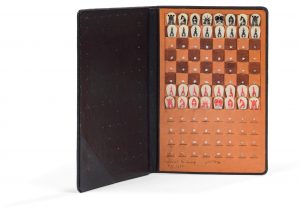Why Did the Korean National Flag Used by the Royal Family Underperform at Auction?

The Korean national flag (Taegeukgi), believed to have been used by the Joseon royal family, was recently exhibited in the Korean auction market, drawing attention.
It turned heads because there is no Korean national flag that has been proven to have been used by the Joseon royal family. Measuring 86.5 cm by 89 cm, this Taegeukgi is made of high-quality silk and is woven with Taegeuk, a pattern located in the center of the Taegeukgi and the four gwae (symbolic patterns) of the Taegeukgi.
Seoul Auction, which held the event, noted that the location of the Taegeukgi’s four gwae is the same as the oldest known Taegeukgi, the ‘Jui Taegeukgi’ at the Smithsonian Museum in the United States, as well as the ‘Day Taegeukgi’ designated as a Korean National Treasure. In particular, it was predicted that the auction price would reach up to about USD 230,000 (KRW 300 million) as the Taegeukgi was square, a symbol characteristic of the king of Joseon, and that it may have been used by the royal family since it was made of the best materials.
However, at the auction held on August 23, 2022, the work was withdrawn or underperformed. As the organizer did not disclose further information, the presence or absence of bid participants was not confirmed. Various concerns have been raised due to the media’s interest in this hot topic.
First of all, analysts suggested that the maximum estimate of $230,000 (KRW 300 million) was too high considering that the association with the royal family has not been proven. It has also been pointed out that hosting Frieze Seoul played a major role in the auction. The Korean auction market, which was hot from last year to this spring, has been catching its breath since the second quarter, in line with the global economic recession. There is a strong wait-and-see stance, with big players temporarily suspending betting. According to the Korea Arts Management Service, the size of the Korean art auction market was about $58 million (KRW 78.53 billion) in the first quarter of this year, the highest performance since 1998. A representative from Seoul Auction also confirmed the failure to sell the Korean national flag and said, “I think the freezing of the auction market ahead of Frieze Seoul is one factor.”
A representative of the gallery said about the sale, “Considering the cost of transportation and management, there is a possibility that the deal could have been made if there was even one bidder,” adding, “In particular, the younger generation who recently entered the art market tends to turn to overseas works first, and sometimes they can’t cheer up when big events (such as Frieze Seoul) overlap.” This work is not likely to return to the auction market in a short period of time, while it is likely to come to the regular market where Korean cultural assets and treasures are traded.











